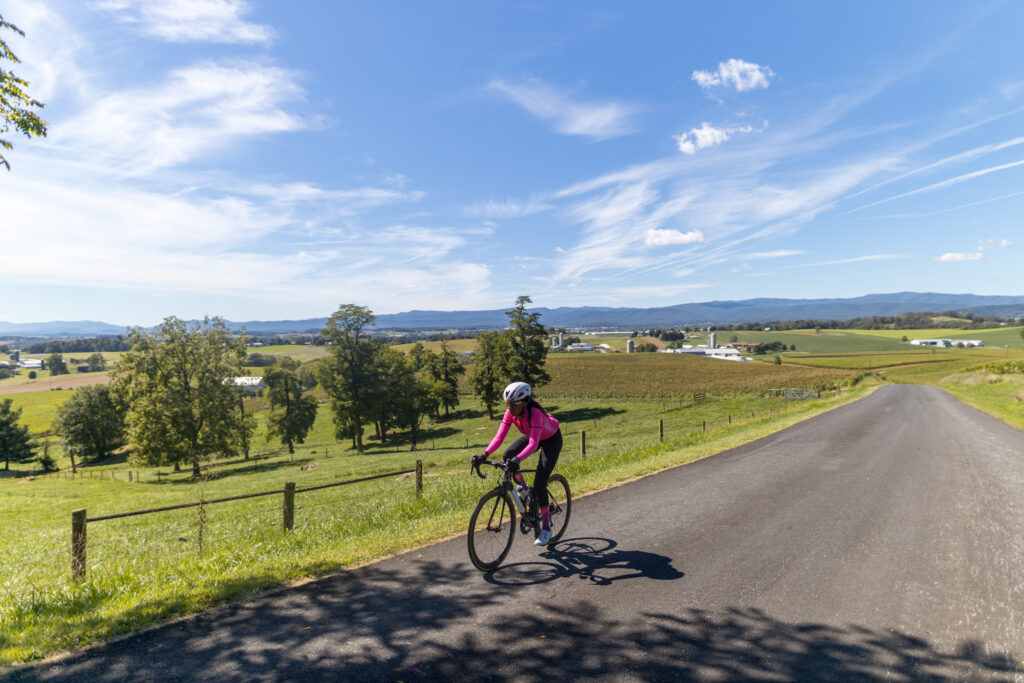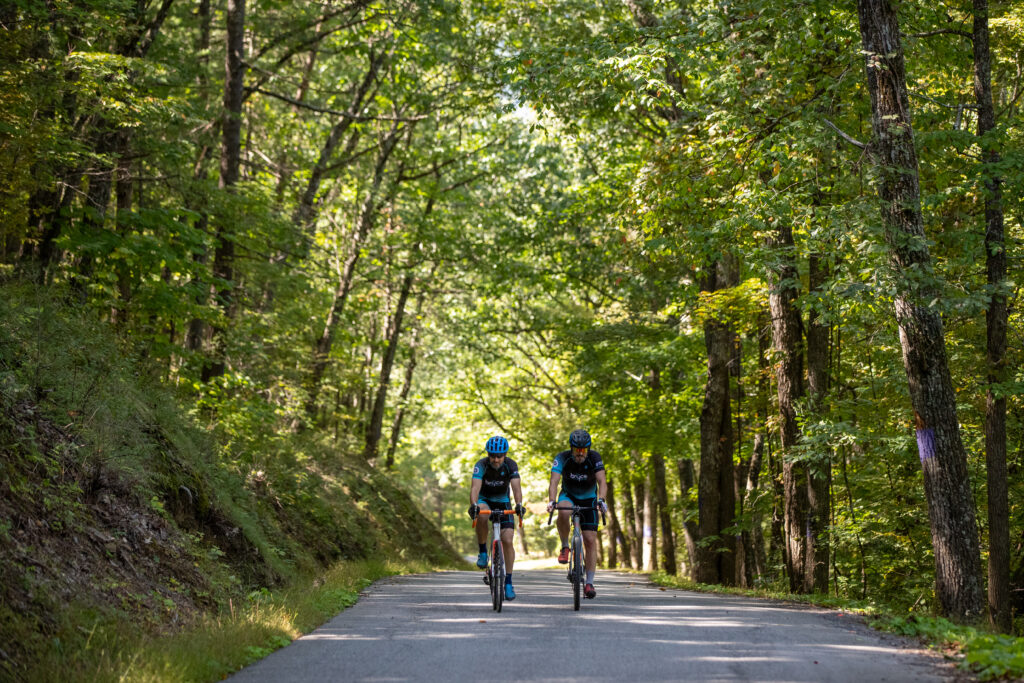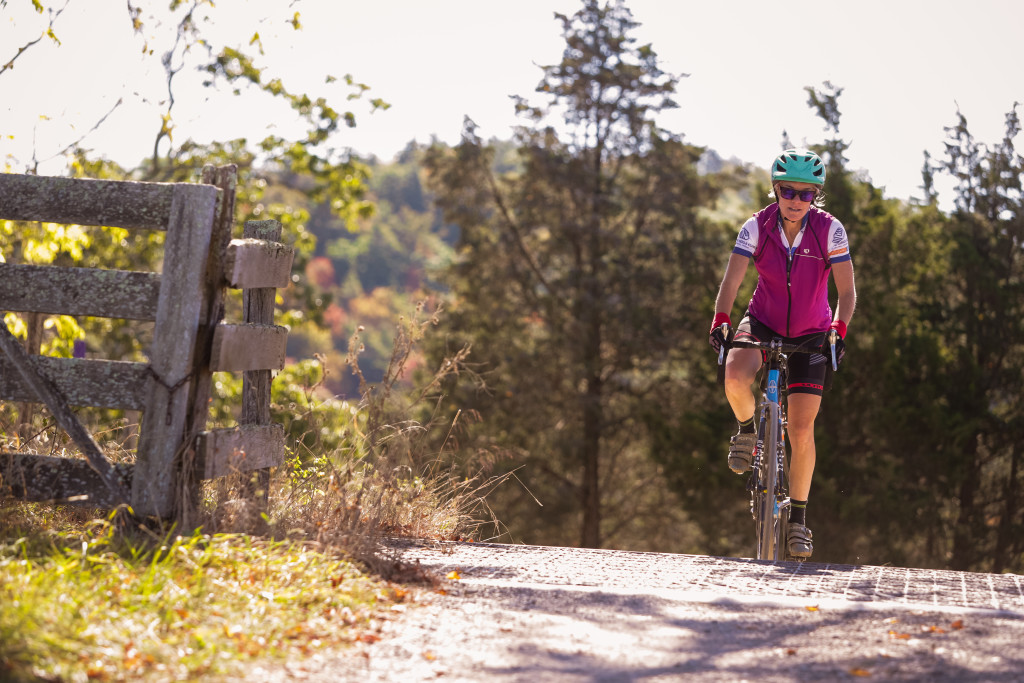All participants should arrive to the Alpine Loop Gran Fondo with bikes in adventure-ready condition; a pre-event tune-up and fresh tires, tubes and/or sealant are strongly encouraged. If you’ll use an e-bike or electronic shifting, come with batteries fully charged. If you have ultra-specific equipment, come prepared with what you need to replace or repair.
All riders should carry a least one (preferably, two on the Alpine Loop) spare tubes, a pump, a multi-tool, and any other necessities.
While we are talking packing pockets, riders should also start with enough food and water to fuel you to your first rest station. For further route-specific info, read on.
The Shenandoah Mountain Adventure, Shenandoah Mountain Century, Mt Solon Metric Century, and Valley View Challenge routes cover entirely paved surfaces. We’ve recently revised the routes to eliminate all unpaved surfaces – while preserving the country lanes and riverside roads. These riders won’t need any event-specific equipment to prepare for the road surfaces.

Riders in the Shenandoah Mountain Adventure and Shenandoah Mountain Century routes need to be prepared with appropriate gearing for the smooth, paved mountain climbs.

The Alpine Loop is a different challenge. Throughout its approximately 110 miles, the Alpine Loop route features about 10,000 feet of climbing including the smooth paved climb on Virginia Route 33 and some incredible mountainous dirt roads. In all, be prepared for about 11 miles of rugged, unpaved rolling-to-steep mountain roads.

The Alpine Loop’s major dirt section is up West Virginia’s Fultz Gap Road, where the pitches are the day’s steepest over the course of three amazing miles and 1,600-feet of elevation gain. Fultz Gap Road is a county road that is maintained for vehicles and includes a mix of primarily dirt with some well-worn-in gravel. The summit opens up to an unexpected mountain-top meadow.

Further along the route, from miles 54-70, Alpine Loop riders will be treated to an incredible section of the course incorporated for the first time in 2018. This addition was well received by new and returning riders alike. A careful look at the course profile will show you that there is a nice little climb hidden in these new miles. Road surfaces will vary from paved to gravel and dirt country backroads. Here you’ll be treated to some amazing sights and wind your way along the Brushy Fork and Blackthorn Creek.
The dirt climbs are what make the Alpine Loop the unique challenge that it is. If you talk with previous years finishers, you’re sure to hear amazing stories of how they tested their limits, cursed the mountain, rose to the challenge, forged new friendships and made some of their best memories right here on the dirt of the Alpine Loop.
Gravel bikes are not required to take on the challenge of the Alpine Loop. Standard road bikes with good tire clearance and a wider tread will be tough enough to tackle the current conditions. Run a lower tire pressure than normal. 30-32c tires are most commonly used. All rest stops will be ready to assist with pumps and fresh bottles of Orange Seal.
Our tire recommendations include (but are not limited to): Continental Gatorsins, Schwalbe Double Defense and Maxxis Re-Fuse. When you’re selecting tires, be sure to talk it over with your usual mechanics at your local bicycle shop – they know you and your bike well, and can help make your selection simpler.
Easy gearing is a must on the Alpine Loop.
For complete equipment regulations that all riders must comply with based on the Alpine Loop Gran Fondo’s permit and insurance policy, visit the “Equipment” page.